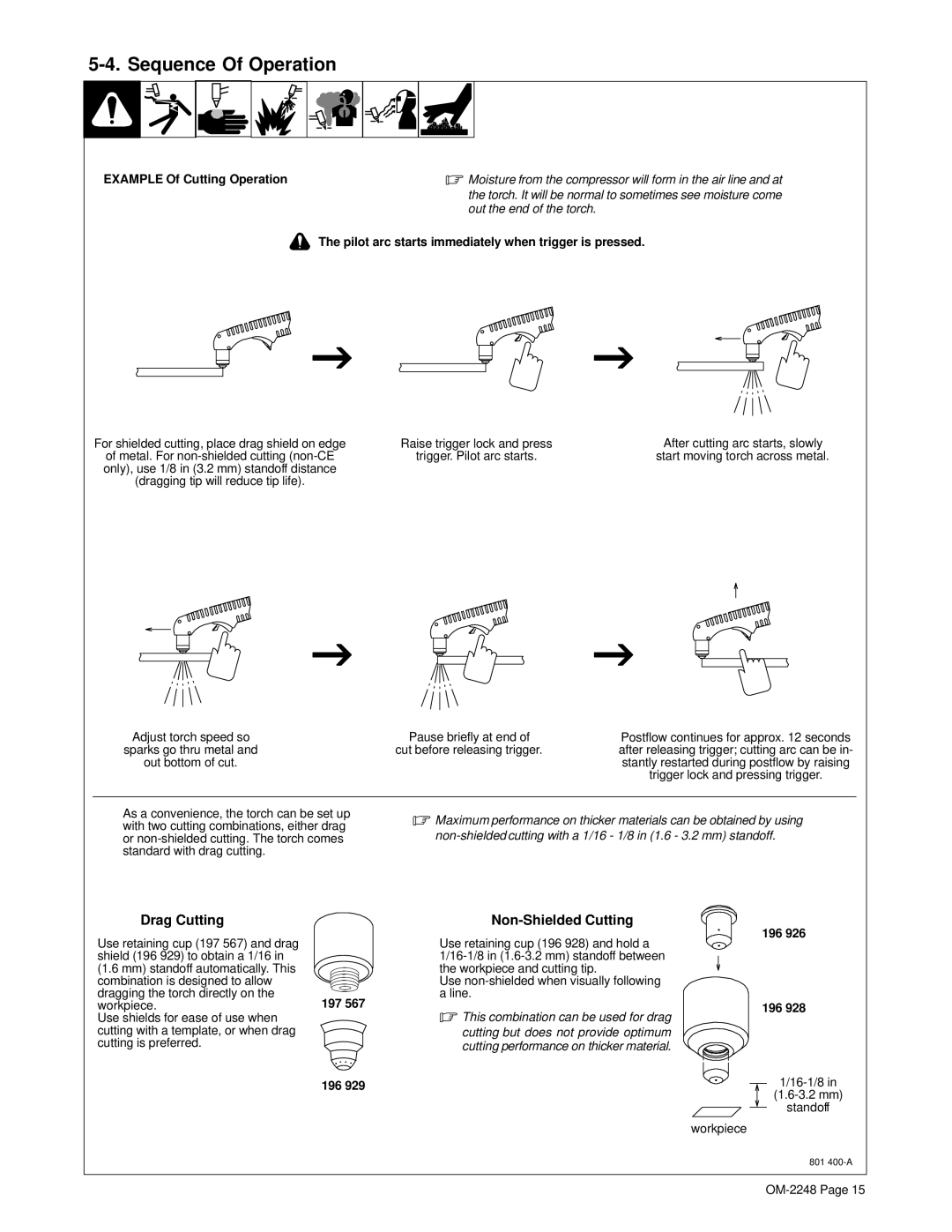
5-4. Sequence Of Operation
|
|
|
|
|
|
|
|
|
|
|
|
|
|
|
|
|
|
|
|
|
|
|
|
|
|
|
|
|
|
|
|
|
|
|
|
|
|
|
|
EXAMPLE Of Cutting Operation |
|
|
|
| . Moisture from the compressor will form in the air line and at | ||||
|
|
|
|
|
|
|
|
| the torch. It will be normal to sometimes see moisture come |
|
|
|
|
|
|
|
|
| out the end of the torch. |
|
|
|
|
| The pilot arc starts immediately when trigger is pressed. | ||||
For shielded cutting, place drag shield on edge | Raise trigger lock and press | After cutting arc starts, slowly |
of metal. For | trigger. Pilot arc starts. | start moving torch across metal. |
only), use 1/8 in (3.2 mm) standoff distance |
|
|
(dragging tip will reduce tip life). |
|
|
Adjust torch speed so | Pause briefly at end of | Postflow continues for approx. 12 seconds |
sparks go thru metal and | cut before releasing trigger. | after releasing trigger; cutting arc can be in- |
out bottom of cut. |
| stantly restarted during postflow by raising |
|
| trigger lock and pressing trigger. |
As a convenience, the torch can be set up with two cutting combinations, either drag or
.Maximum performance on thicker materials can be obtained by using
Drag Cutting
Use retaining cup (197 567) and drag shield (196 929) to obtain a 1/16 in (1.6 mm) standoff automatically. This combination is designed to allow dragging the torch directly on the workpiece.
Use shields for ease of use when cutting with a template, or when drag cutting is preferred.
Non-Shielded Cutting
196 926
Use retaining cup (196 928) and hold a
Use
197 567 | 196 928 |
| . This combination can be used for drag |
| cutting but does not provide optimum |
| cutting performance on thicker material. |
196 929 |
standoff
workpiece
801
